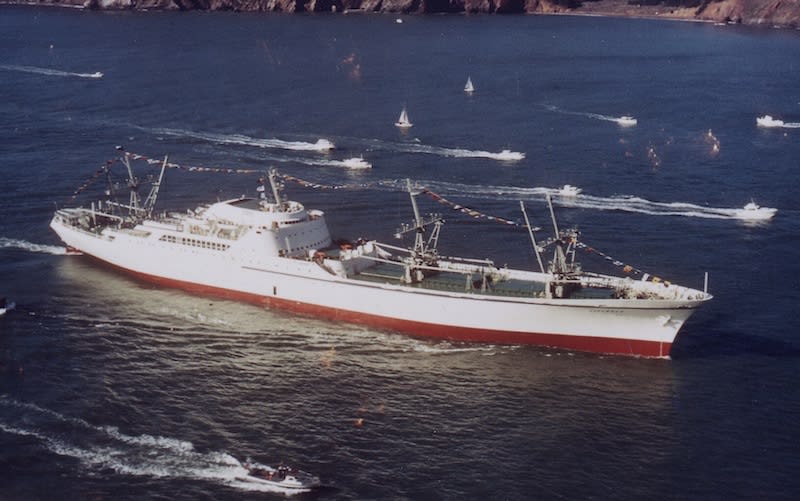The Learning Curve
Follow articleHow do you feel about this article? Help us to provide better content for you.
Thank you! Your feedback has been received.
There was a problem submitting your feedback, please try again later.
What do you think of this article?
How do we coexist with the technology we create?
We have seen many headlines over recent months about the rise of artificial intelligence (AI) and machine learning (ML). These new stories are accompanied by some apocalyptic predictions of their effect on mankind. The suggestions of experts range from an intelligent search engine that can write school essays all the way up to the end of humanity.
There have been many occasions in the past when we have had to come to terms with the new technology that we have created, learning how to coexist with it and use it to its advantage. The learning curve has not always been smooth, and our relationship with technology is occasionally traumatic. One of the most extreme examples can be found in the industrial revolution, which had a huge effect on how people worked, how they fed themselves, and even where they lived.
More recently we have had to deal with the growing use of electric vehicles. The concept of an electric vehicle is not new, and we all have an instinctive idea of how they can be used in modern society. However, our relationship with technology is defined by more than simply knowing how it works. We must come to terms with how to employ it in day-to-day life.
Charging Batteries and Fighting Fires
In the case of electric vehicles, we have talked before about the transport infrastructure and how the availability of charging stations will change our behaviour. A journey that might take two hours in a petrol-powered vehicle, using less than a single tank of fuel, might take considerably longer in an electric car. Allowances must be made about the range capabilities and charging time of the vehicle, both of which will change how was use our cars.
There are wider impacts that we need to consider. In a recent interview with Brian Engle from Amphenol, we talked about other challenges that people are having to address with the use of electric vehicles. Firefighters have had a century to develop the experience needed to extinguish conventional vehicle fires. A well-trained team of firefighters is an impressive sight to watch, and a vehicle fire can be handled within seconds using established techniques.
When it comes to fire in a battery-powered vehicle, significant problems arise. The water- or foam-based extinguishers that firefighters use for gasoline-powered vehicles are completely unsuitable for electric vehicles because they are conductive. In addition, the huge amount of energy held within a battery can create a thermal runaway event that is quite spectacular. Firefighters are having to develop new techniques to ensure their own safety and that of the public.
The Friendly Atom
Occasionally, new technology is developed before we know exactly what to do with it. The modern view of nuclear power is problematic. It is tainted by decades of concern about the threat of war, along with the stigma created by several accidents around the world. However, at the dawn of the atomic age in the 1950s, many thinkers believed that it would deliver the promise of limitless clean energy. To think about the “friendly atom” seems terribly nostalgic, but at the time, nations were seriously considering atomic-powered cruise liners or the use of nuclear explosions in civil engineering.
The Nuclear-Powered Ship of the Future, 1950-style
By US Government - NARA: https://arcweb.archives.gov, Public Domain, https://commons.wikimedia.org/w/index.php?curid=881282
And so, we return to the subject of artificial intelligence. The predictions about the effects of artificial intelligence do not necessarily fill us with confidence that artificial intelligence is a force for good. A poor transition into the use of artificial intelligence could prove to be disastrous for many people around the world. We must consider the morality of technology, something that we do not often address. Simply put, we need to remember that just because something can be done, it does not necessarily follow that it should be done.
Personally, I am quietly confident that, with the right forethought and collaborative approach, AI will be just another new technology. We will adapt, just as we have before, but we must be prepared for the learning curve while we try to work out what to do and how to do it.
We are therefore entering the next computing age, an age in which artificial intelligence and machine learning will become a significant part of our daily lives. AI might be used as a computing tool, albeit one that can provide rapid analysis of huge amounts of data, or it might become responsible for major policy decisions. We, as a society, need to define what we want this new advance to do for us. We cannot allow the power of technology to blind us from its potential impact on people at large.
Technology can work for the benefit of mankind, or it can be allowed to become a more sinister force in our lives. It is up to us to decide which.




Comments